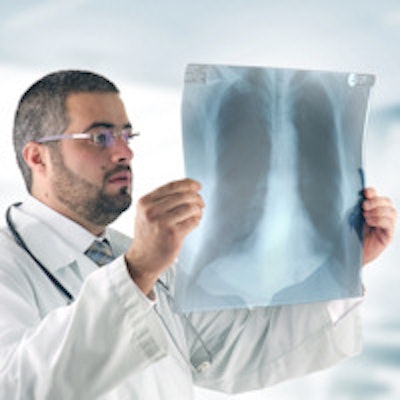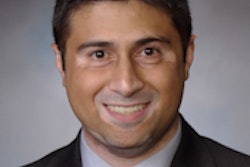
I have to admit it: I love teaching! If the word existed, I would be called a "teach-aholic." I navigated my way through medical school with lots of learning and even more teaching. By continuously doing so throughout radiology residency, my training experience was fun and fruitful at the same time.
Spending a good chunk of my professional life in teaching has helped me observe what makes a radiology resident exceptional. Such observations were substantiated throughout my fellowship and further confirmed in my postfellowship practice. What I have learned from these observations is that the complexity of forming a solid radiology resident can be simplified with three primary rules.
My firm belief in these three rules made me want to share them with you in this article. If you are a radiology resident, I guarantee you can become a superstar in your program by adamantly sticking to what you read below.
Rule No. 1: Read about what you see
You may read the literature for several hours a day, and then read the same material for an additional several hours on another day, but such an effort does not guarantee that the information will stick. Ask any resident currently doing a neuroradiology rotation about a heavy clinical topic he or she read about during a long-gone abdominal imaging rotation three months ago. The answer, almost invariably, will be, "I went over this topic well, but I remember almost nothing now!"
 Dr. Amr Ajlan from King Abdulaziz University.
Dr. Amr Ajlan from King Abdulaziz University.Chances are this might also be your own answer regarding a chest topic you read about only two weeks ago. There is a way to overcome this phenomenon, however.
A surefire way to help residents remember literature is to ensure that their reading relates to cases they've recently seen in real life. So my advice is to read literature related to cases that you have seen that same day. There is nothing more fruitful than learning about a topic recently encountered at teaching rounds, at the workstation, or while on call.
Because the specialty of radiology is quite different from other medical or surgical specialties, many topics are also new to the beginning resident. A newbie may see many unusual cases and subsequently feel obliged to read about lots of related topics, potentially getting overwhelmed. Don't let this discourage you from reading, though.
A simple way around this problem is to write all new case diagnoses on a list. If you have many important topics from the same day, choose a few of them to go over. Never fall into the mistake of ignoring the entire list just because it looks terribly depressing. You don't have to finish the whole list on the same day.
For example, if you read about two of 10 jotted-down topics, that's OK. Although you "compromised" by not reading eight topics at the moment, the list will only grow shorter as you progress in residency.
Rule No. 2: The best way to know how to take a case is to give one
If you can't explain a topic, it's probably because you don't understand it well enough. That is why I strongly encourage you to develop a habit of continuously testing your colleagues on educational radiology cases.
There are several benefits from such an approach:
- The more you teach your colleagues about something, the more you learn about it yourself.
- By observing the presentation styles of others, you can learn from their successes and mistakes.
- As you continue to share your cases, colleagues will tend to reciprocate with their own interesting cases, which can only increase your exposure.
- Last but not least, preparing cases to show them to others requires plenty of reading around the topic, which will enhance your knowledge in a practical and enjoyable way.
At our training program, we introduced a new kind of teaching method called "resident-to-resident" rounds, which our residents have dubbed "R2R." The sole purpose of such rounds is to reinforce the points mentioned above.
The R2Rs each have a particular theme, and every resident prepares a case. The difficulty of the case doesn't matter, as long as it is from real life and is not taken from the Internet or previously prepared material. Every resident thus gets the chance to benefit from the preparation process itself.
At each R2R, a supervising senior staff member chooses two residents: an examiner and an examinee. The first resident tests the other on the selected case. Meanwhile, the senior person evaluates the performance of both residents.
The feedback from our residents on the R2R rounds has been more than satisfying. They feel that the practice has improved group dynamics and augmented their presentation skills. They all agree that the examining resident is the one who benefits most from this practice. After all, the best way to know how to take a case is to give one!
Rule No. 3: Be a case collector
Although some see it as a quirk, I consider it a must: Create your own teaching file!
We encounter many good teaching cases in our radiology practice, and each case is a treasure trove of learning opportunities. There are many perks of having a large teaching collection. Saving images from clinical cases on your external hard drive will likely imprint them in your brain as well.
The selected images are excellent memory aides, always reminding you of their initial context. More so, a teaching file can be used to apply two of the rules mentioned above: Read about the interesting cases you add to your collection, and then test your peers on the cases.
Another advantage is getting a reputation as a "case collector," which will enhance your reputation among other residents. This, in turn, can result in people seeking to provide you with even more cases.
Additionally, an extensive teaching file will always come in handy when preparing talks in the future. It is no secret in the radiology world that a successful presentation is often linked to attractive images. Your teaching file will help you achieve that.
Epilogue
We all know the type, don't we? The good-hearted radiology resident who always asks if you're going over an interesting case. I know such individuals can be slightly persistent and possibly annoying, but once they get your case, we know what's going to happen next. They'll add it to their teaching files, read about the topic, and test another resident using that same case.
That is why such individuals end up becoming radiology resident superstars -- and there's no reason you can't join them!
Dr. Amr Ajlan is an assistant professor and consultant radiologist in the cardiothoracic imaging division of the radiology department at King Abdulaziz University Hospital in Jeddah, Saudi Arabia. He is also the Saudi Board of Radiology local program director at King Abdulaziz University Hospital and a member of the Saudi Board of Radiology examination committee.
Dr. Ajlan completed medical school at the Faculty of Medicine and Allied Sciences at King Abdulaziz University. He did his general radiology residency at McGill University Health Centre in Montreal. His residency training was followed by a fellowship in thoracic imaging and another in cardiovascular imaging at the University of British Columbia.
The comments and observations expressed herein are those of the author and do not necessarily reflect the opinions of AuntMinnie.com.



















